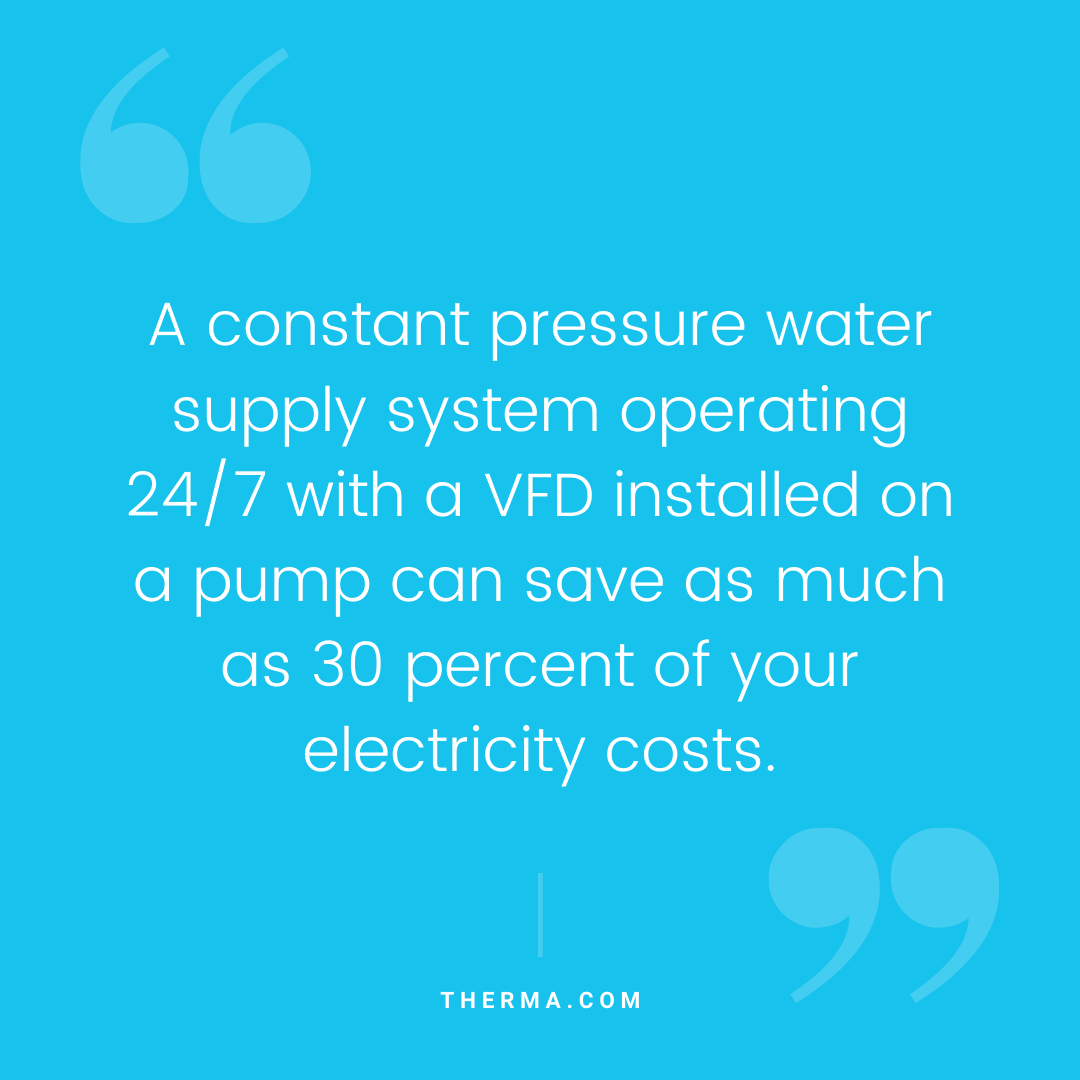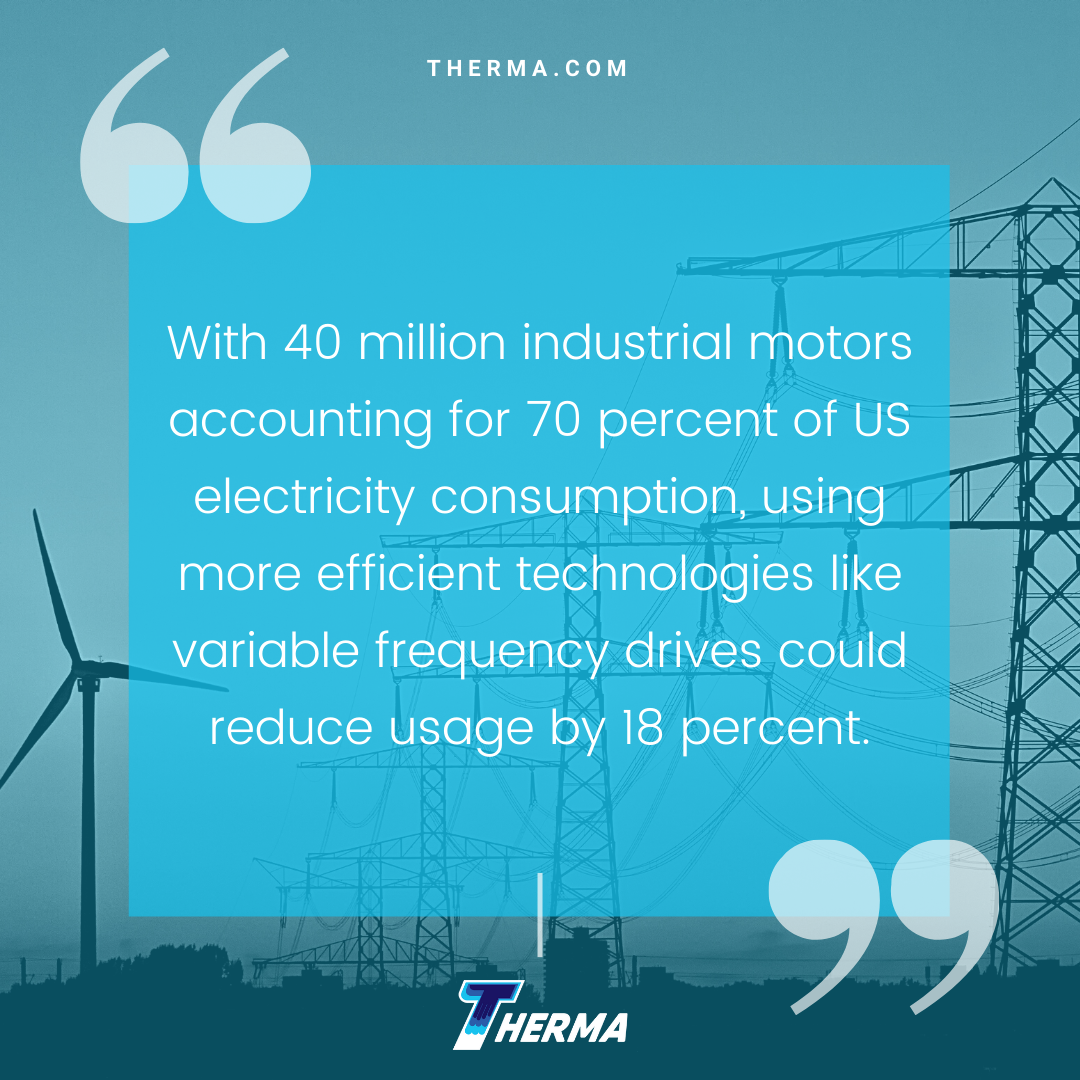Variable frequency drives or VFDs are devices used to vary the frequency to AC motors so they can operate at desired speeds. With a maximum of around 1000 HP, the first VFDs were low-voltage — less than 690 V. Medium-voltage VFDs operate at much higher voltages — 15,000 V or so and can achieve more than 20,000 HP.
VFDs control motor speed at all phases of operation, including start/stop cycles and during the running cycle. They can control with full torque from 0 rpm to maximum rated speed and even above, although torque is reduced if rated speed is exceeded.
Originally used mostly with centrifugal pumps for energy savings, the original low-voltage drives were tough on both motors and supply lines because they injected harmonic currents into the lines and generated heat that had to be dissipated to avoid damage to the motor.
Variable frequency drives that gained wide usage in the 1970s caused cables and transformers to overheat and while the harmonics generated interfered with television signals, telephones, and instrumentation.
The solution to both these problems has been to place sine waves on either side of the VFD (line reactors). This stops most of the harmonics but limits power going to the VFD. Capacitors are also used to short the harmonics, as well as isolation transformers, which are effective but expensive.

Since industry standard 519 was developed by the Institute of Electrical and Electronics Engineers (IEEE) in 1981 and imposed the following year, harmonic distortion of current draw must be less than 5 percent.
Accordingly, in the more than 40 years since VFDs have been in common use for HVAC, water optimization and wastewater systems, the technology has advanced dramatically while costs have fallen. The manufacturer can help you find the right VFD for your system by determining the optimal number of pulses required. Typical VFDs for HVAC applications have 12 standard pulses, with options for six or 18.
Advanced electronics, increased programming options, reduced size and lower prices make VFDs an increasingly good choice for HVAC, water, and wastewater operations.
How VFDs Work
In order to control AC motor speed, you need to either vary the magnetic flux or modify the number of poles on the motor itself. Variable frequency drives are able to control frequency output by converting incoming AC current into DC. They then modulate voltage pulse width to recreate both an AC current and a voltage output waveform.
Variable frequency drives can
- start motors at zero voltage and frequency
- eliminate voltage sag, thereby reducing power line disturbances
- help avoid surge pricing due to lower starting power
- control operating speed
- limit and adjust torque, so limits are never exceeded, which protects the motor; and
- eliminate the need for mechanical drive components.

Benefits of VFDs
Cost and energy savings are the primary benefits of VFDs. A constant pressure water supply system operating 24/7 when a VFD is installed or retrofitted on a pump can save as much as 30 percent of your electricity costs.
Consumed pump power is directly proportional to its velocity cubed. That means a pump running at 80 percent uses only 51 percent of full load power.
Maintenance costs for pumps fitted with variable speed drives, a subset of VFDs, are also lower due to their soft start features. This increases motor life, and in a dual pump system, alternating pump usage provides not only a fail safe, back-up system, but can also extend the life of your equipment.
Pump control optimization is another feature of VFDs. They can be slowed down or speeded up to match system requirements. By regulating water pressure and maintaining water flow you will be able to conserve water. In a dual pump system, the lead pump can be set for maximum flow while the back-up pump can be varied to match system demand.
With 40 million industrial motors accounting for 70 percent of US electricity usage, the US Department of Energy estimates that using more efficient technologies like variable frequency drives could reduce consumption by 18 percent.
If you have questions and would like more information on how VFDs can help you optimize your water or wastewater systems, Therma can help. Get in touch today.







